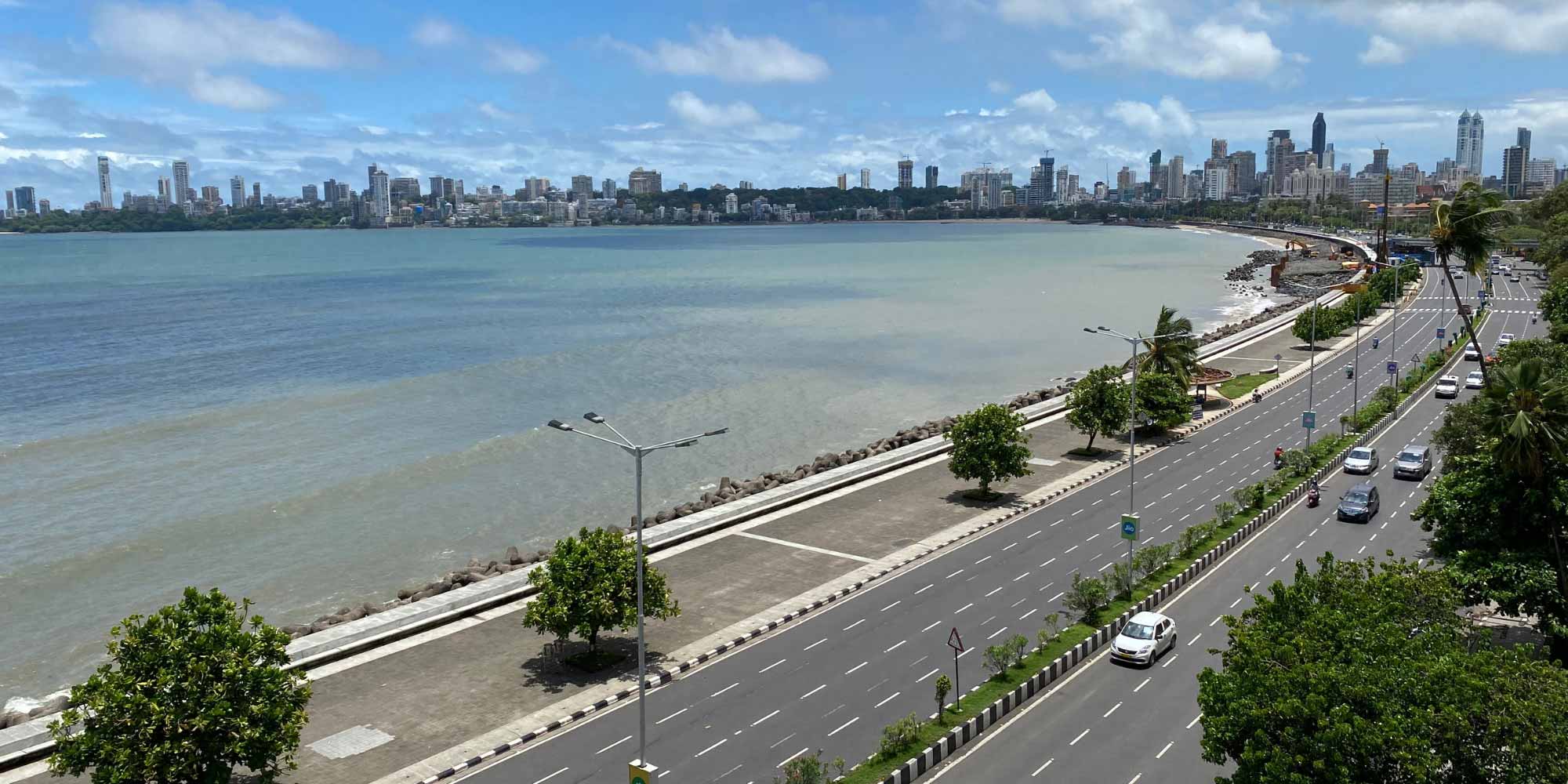Marine Drive sits on the 1920s Back Bay Reclamation that shaped a dream for a modern city. It had well-spaced apartment blocks, a broad promenade, and a road so wide you could land a small aircraft on it. That was when you travelled by ship. Accentuating the sweep around the bay lie 35 Art Deco buildings, crown jewels that pay homage to an era of emerging modernity expressed through Art Deco, the prevailing architectural style. The timelessness of the classic design withstands the test of time.
Its dynamism and versatile interpretation gave homegrown architects emerging from India’s premier school of architecture – Sir J J School of Art (as it was known then) – a way to acknowledge Bombay’s prowess as a port city, through a rich array of nautical elements placed on buildings as decorative motifs. Residents could look out at the bay through a round window resembling a porthole on a ship. They spent the evening on their terraces that resembled turrets or viewing galleries, akin to an ocean liner, taking in the panoramic seascape and the evening sea breeze. It took us a century and another pandemic to rediscover these spaces and reclaim them as our own. The uniform skyline, low compound walls and a respectful minimalism that clearly acknowledged the sea as the showpiece, led UNESCO to comment that the precinct retains a “high degree of integrity in visual, spatial and planning terms.”
Hundred years later, the northern end of Marine Drive has been lost to a reclamation (the coastal road) while the southern end stands tall, protected by the 2018 World Heritage Site inscription by UNESCO, and the will of the people. This southern end is now, unfortunately, being roped into a new BMC proposal to paint the facade of all 35 Art Deco buildings, altering their distinct character.
Marine Drive is synonymous with Mumbai. Its spirit of social mobility comes alive here in a resplendent manner. Every 24-hour cycle brings marathoners, students, families with children and pets, and lovers holding hands as they catch the day’s end over a glorious sunset. An escape from the city’s congested innards, it sees throngs from all over the metropolis come to take in the open space, creating a multicultural melting pot. The bustling city with its sprawling slums and luxurious towers may be disparate in many ways, but Marine Drive belongs to everyone. Complete strangers sit in close proximity, reciprocating accommodation that reflects a unique social and cultural comfort. That too at a place that offers no food and barely a toilet.
Marine Drive has been home to the likes of film actress Nargis, former Prime Minister Morarji Desai, and Kawasji Fakirji Sidhwa, Bombay’s foremost bootlegger of the 1930s, who boasted that his brew was better than many a scotch. It hosted the go-to costume maker Maganlal Dresswalla, a cutlery showroom, trendy nightclubs, restaurants, ice cream parlours, a jazz bar turned pizzeria, and an impeccable 1930s Art Deco hotel (Sea Green Hotel), still owned and managed by the family’s fourth generation. Such was the milieu of the time. Claude Batley, architect and head of the department of architecture from 1923-43 at Sir JJ School of Art, spoke of the “worthwhileness” of this stretch by the sea, drawing attention to the “happy throngs of promenaders, of all sorts and conditions, drinking in the sea air morning and evening.” Ironically, while Marine Drive’s development did not escape allegations of scams, corruption and scathing attacks by the legendary K F Nariman and others, it witnessed a constant traffic of the city’s who’s who, became a hub of recreation and respite from its relentless pace, and a dynamic site seeded in people’s popular imagination of the city.
Can we value the freedom and sense of well-being Marine Drive affords us? Can we challenge the seeming legitimisation of appropriating this public space through state-mandated calls for beautification? An instagrammable Marine Drive belongs to everyone; every resident and visitor has invested their own meanings to it over time. Even as the promenade sees an ever-evolving footfall, some things remain constant.
Twenty-six years ago, Marine Drive was renamed. Despite the persistent determination, the new name remains elusive, even to a newbie taxi driver. The character of this precious seafront has evolved over the years, but on its own terms, and in constant dialogue with its residents and visitors. Painting it with the same brush, as if it’s a static monument, not a living piece of modern history, erases its essential character. As Mumbai architect and historian Kamu Iyer would say: “Some things are worth keeping even if they do not have a patina acquired with age”.
Correction: In the last paragraph, “twenty-six years ago” should read “around 67 years ago”
This article first appeared in the Hindustan Times on June 24, 2023. https://www.hindustantimes.com/opinion/change-is-constant-but-let-marine-drive-remain-101687610426552.html
Atul Kumar
Atul Kumar is Founder Trustee, Art Deco Mumbai.

